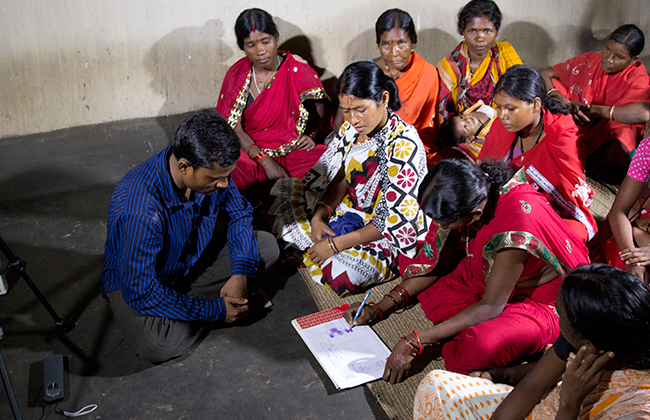Community Video for Nutrition Guide
MIYCN Elements: Formative Research | Capacity Building
The first component of the SPRING/DG collaborative approach, Initiation, has three distinct steps: mobilization, situational analysis, and capacity building (Figure 1). Complete information on all steps can be found in the DG SOPs.

Figure 1 below details the steps in the initiation process with bolded emphasis on the elements specific to the MIYCN approach detailed in this guide. Other steps not specific to MICYN activities are only briefly summarized and are further explained in the DG SOPs.
Figure 1: Initiation1
Click on the "Read section ..." buttons below and the corresponding steps in the process will appear.
Mobilization
- Hold a strategy meeting with all partners to clarify roles and responsibilities and develop detailed implementation plans.
- Identify villages and local teams to undertake video production, editing, screening and data collection, and reporting.
- Share the approach with the local community.
- Procure and allocate equipment based on specifications.
Situational Analysis
- Conduct a landscape or background review to understand the nutrition situation.
- Conduct a rapid formative research assessment to understand current practices and determinants of behavior.
Capacity Strengthening
- Train key partner staff and local village teams in video production, dissemination, and data collection and entry.
- Conduct nutrition sensitization trainings for key partner staff and local village intermediaries to include SBCC concepts.
[block:quicktabs=component_1_initiation]